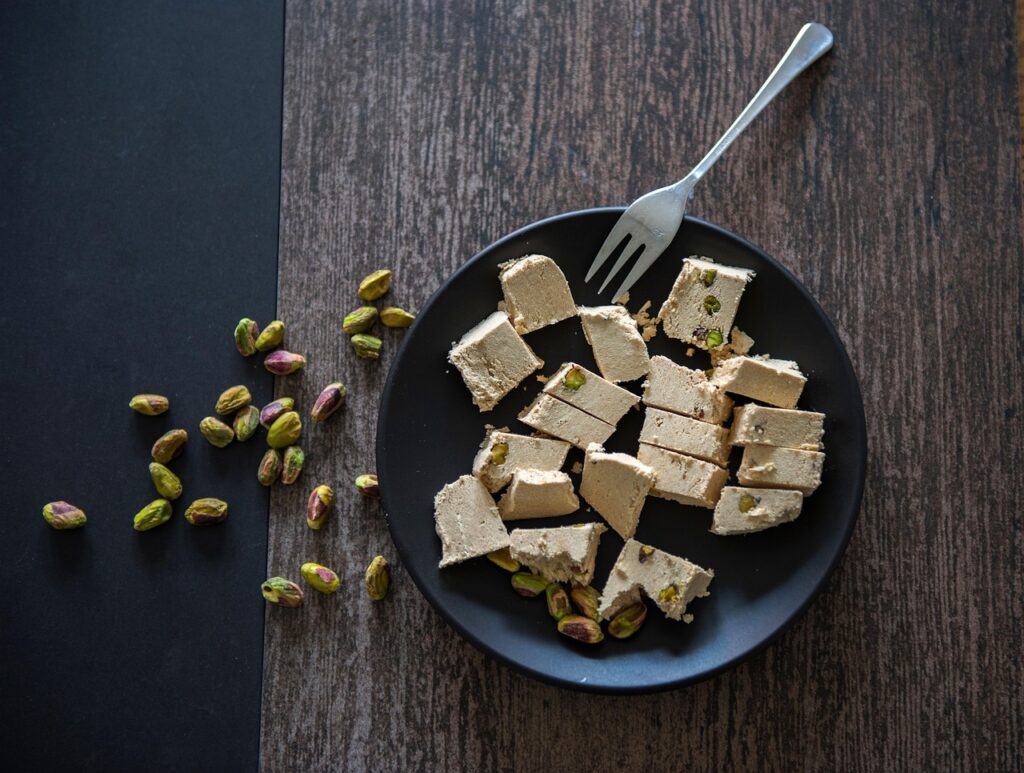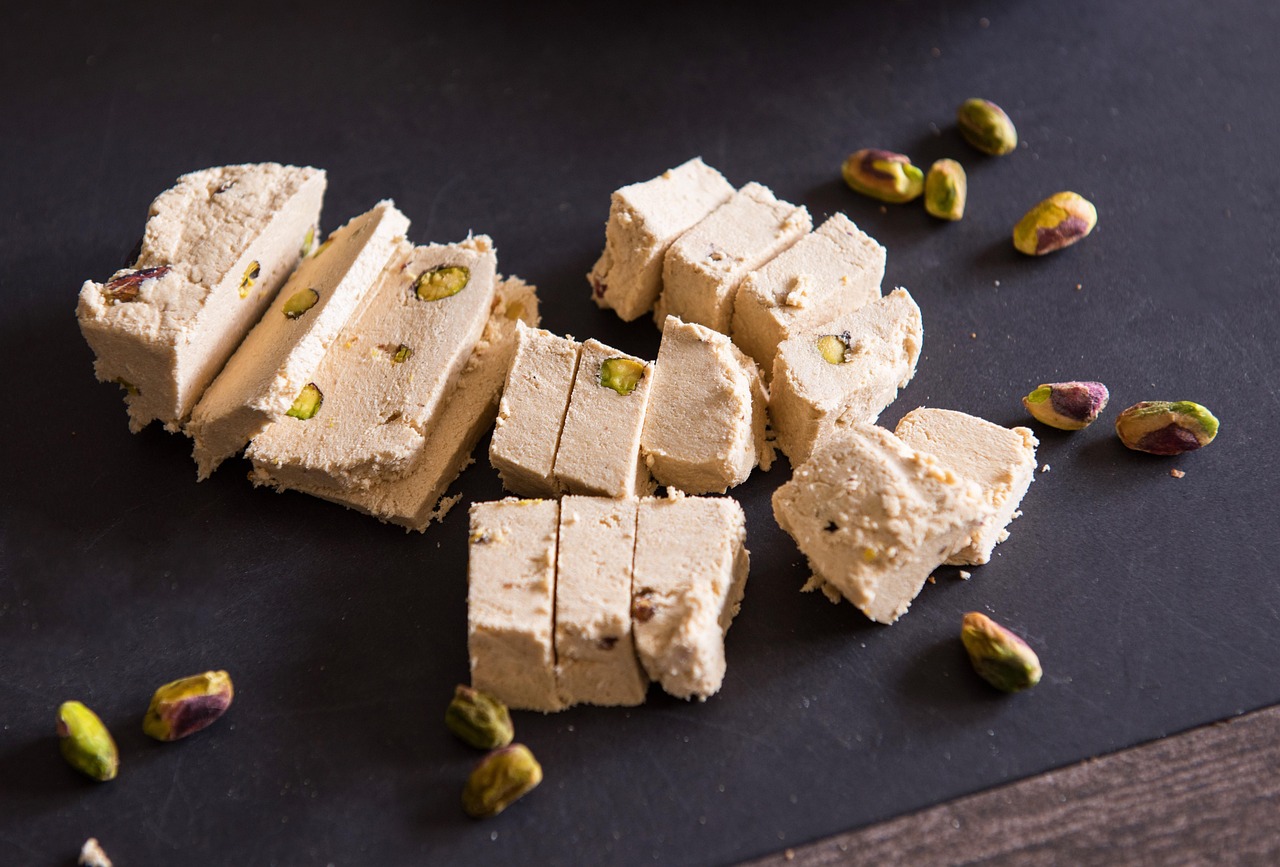Halva is one of the world’s most beloved traditional sweets, enjoyed from the Middle East and the Mediterranean to Eastern Europe and South Asia. Its name comes from the Arabic word ḥalwá, meaning “sweet,” and it exists in many cultural variations.
While recipes differ—ranging from sesame-based tahini halva to flour- or nut-based versions—this dessert has not only culinary value but also nutritional benefits.
Let’s explore the health properties, uses, and reasons why halva is more than just a treat.
What Is Halva?
The most popular type of halva worldwide is sesame halva, made from ground sesame seeds (tahini) blended with sugar or honey. Other variations include:
- Sunflower seed halva – common in Eastern Europe.
- Nut halva – made with pistachios, almonds, or walnuts.
- Flour-based halva – made from semolina or wheat flour, popular in India, Turkey, and Greece.
Each type brings its own unique texture, flavor, and nutritional profile.
Health Benefits of Halva
1. Rich in Healthy Fats
Sesame- and nut-based halva contains monounsaturated and polyunsaturated fats that support heart health and lower bad cholesterol (LDL).
2. Packed with Minerals
Halva is a good source of calcium, magnesium, iron, and zinc, which support bones, blood health, and immunity.
3. Plant-Based Protein
Seeds and nuts provide a natural dose of protein—important for muscle repair and energy.
4. Antioxidant Support
Sesame seeds are rich in lignans (sesamin, sesamol) and vitamin E, which protect cells against oxidative stress and aging.
5. Energy Boosting
Due to its natural sugars and nutrient density, halva provides quick energy, making it a traditional snack for athletes, workers, and those needing extra stamina.
Properties of Halva
- Nutrient-dense – contains healthy fats, protein, and minerals.
- Antioxidant-rich – supports cellular health.
- Energizing – provides both quick and sustained energy.
- Versatile – can be enjoyed as a snack, dessert, or ingredient.
Uses of Halva
🔹 Culinary Uses
- As a dessert: eaten plain or topped with nuts and spices.
- In baking: swirled into cakes, cookies, and pastries for a nutty flavor.
- With breakfast: served alongside fruit, yogurt, or bread.
- In confections: used in ice creams, chocolate bars, or spreads.
🔹 Traditional Uses
In many cultures, halva is offered during festivals, religious ceremonies, and family gatherings as a symbol of celebration, comfort, and togetherness.
⚠️ Things to Keep in Mind
While halva has nutritional benefits, it should be eaten in moderation:
- High in calories: Due to sugar and fat content, large amounts can contribute to weight gain.
- Sugar content: Some versions contain high levels of refined sugar—look for honey- or natural-sweetener options if possible.
- Allergies: Those with nut or sesame allergies should avoid halva.

Halva is more than just a sweet indulgence—it’s a cultural treasure with nourishing qualities. Thanks to its healthy fats, minerals, and antioxidants, sesame or nut halva can be part of a balanced diet when enjoyed in moderation.
Whether you savor it with tea, spread it on bread, or incorporate it into desserts, halva remains a timeless treat that nourishes both body and soul.

